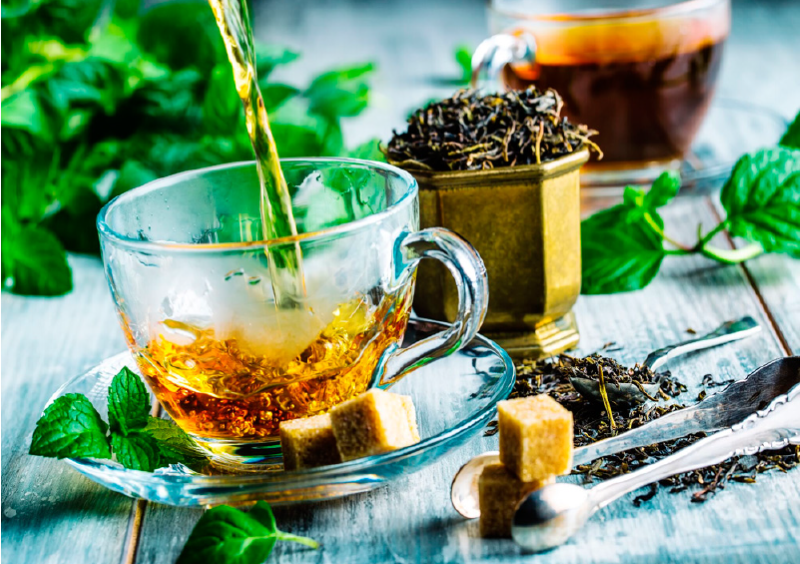The History of Tea: From Ancient Origins to Global Beverage.

The History of Tea
| Tea, a delightful and fragrant beverage, holds a significant place in the daily lives of people worldwide. When we take a moment to savor the light-colored mixture as it touches our lips, we may not always realize that we are participating in a time-honored tradition that spans over 5,000 years. |
The History of Tea, Of course, tea has historically been an old drink. The word tea is derived from the word chai (cha) and is a Chinese word. According to historians, tea was first used in China in 2737 BC during the Eid of Emperor Shennong. But tea was mentioned in Chinese literature in 350 AD.
This legendary drink came out 5,000 years ago as a result of a mistake, an emperor of China, Shenyang, always boiled water, once he went to the forest for hunting. There his servant was boiling water. The fire of dry twigs was burning nearby when a few dry leaves of the dry twig fell into the water kettle.
The History of Tea Discovering the Tea Plant in China
Due to the leaves, the color of the water became a little colorful. Shahansha drank the water in a hurry. The emperor liked the taste of water. So Emperor Shenyang Nian ordered the collection of the seeds of the bushes. It was the first sip of tea in the world that Emperor Shenyang drank.
Soon tea became China’s culture. In the 6th century, tea spread to Japan. By 800 A.D., a Zen Buddhist monk had written a detailed history of the use of tea, and since the Zin-Badas believed that tea helped in fluid concentration.
The History of Tea, So this drink had become part of their religious rituals. When Buddhist missionaries went to Japan, they also took tea with them, there was a time in the mythology of tea when some Indian and Japanese Buddhists used tea to tell the story of Buddha.
According to him, when Buddha woke up from meditation five years later, he ate the leaves of a wild tea tree. Soon after the introduction to Japan, tea culture and tea ritual “Chao Tu Yu” were born there, which literally means hot water for tea.
In this ritual of tea, pouring tea and offering tea to the guest of “Geisha” came to be considered as a way of sophistication and elegance. Irish-Born Greek journalist and historian Lufsa Devonburn, who was granted Japanese citizenship at that time, saw and wrote this ritual of tea.
As tea competition became more common among Japanese nobles, the use of tea began to eliminate the element of original Buddhism. In these competitions, if he won the competition for the right mixing of tea, he would be given gems and armor in the prize.
In the 13th century, Buddhist monks unsuccessfully tried to bring tea to its original zen recipe. In 1560, when Portuguese missionaries established trade relations with China, tea began to be imported into Europe. Some historians oppose this, saying that a year before this, Arab traders had brought tea to Venice, Italy.
The History of Tea, In 1610, the first ship of tea was sent to Europe by Dutch traders who imported it from China and Japan. In 1650, these traders started importing it from the American colonies. In the beginning, since it was very expensive, it became only a drink of the nobles.
First it became common among the Dutch people. Not everyone was even ready to drink this unknown drink. Doctors and healers said that how this black and bitter mixture can prove to be good for people.
In 1610, after nearly 100 years of debate, tea reached the common people, despite the opposition of doctors, tea had a positive effect on the health of Europeans.
Tea was traded in Britain in 1652. In 1652, tea was sold for the first time to coffee houses in England. It soon became britain’s national drink. By 1700, Britain was exporting 240,000 pounds of tea. Due to tea, there was a pleasant change in the daily life of the British and the practice of afternoon tea became common.
Tea and the British Empire: The Role of the East India Company
British trading companies became famous all over Europe for exporting tea. Among them Lipton and Brock Bond are particularly notable. The East India Company also played an important role in the cultivation of tea. Tea cultivation in the Indian subcontinent started in 1823.
The East India Company started propaganda on the pretext of political instability in India that it was harming trade. Gradually they forced India to grow poppies. In return, they used to buy tea from China.
The History of Tea, In this way, the British limited the original capital to their empire. This trade in tea for poppy led to the Battle of Afifion in the 18th century, after which the British completely occupied the tea trade. In the 19th century, tea began to play an important role in the social movements of Europe and America.
The Boston Tea Party and the American Revolution
A woman in England who worked at a bread shop forced her owner to allow her to serve tea to her special customers. In 1864, the woman also took permission to keep some table chairs in the shop so that people could sit there and drink tea.
Such tea houses in Britain became a source of a new kind of social interaction for women and led to women’s freedom. Similarly, for those who did not drink alcohol, tea emerged as an alternative drink. In 1904, the Americans developed tea by inventing ice tea, and then in 1908, for the first time, “tea bags” were made and its use increased.
A tradition was very popular in an old shar khu kand of Fergana Valley, a well-known Islamic country of Uzbekistan located in Central Asia. According to tradition, the concept of teapots and large plates used in every special and common feast was made so that the housewife does not forget that guests have to be treated to tea after the dinner of this feast




